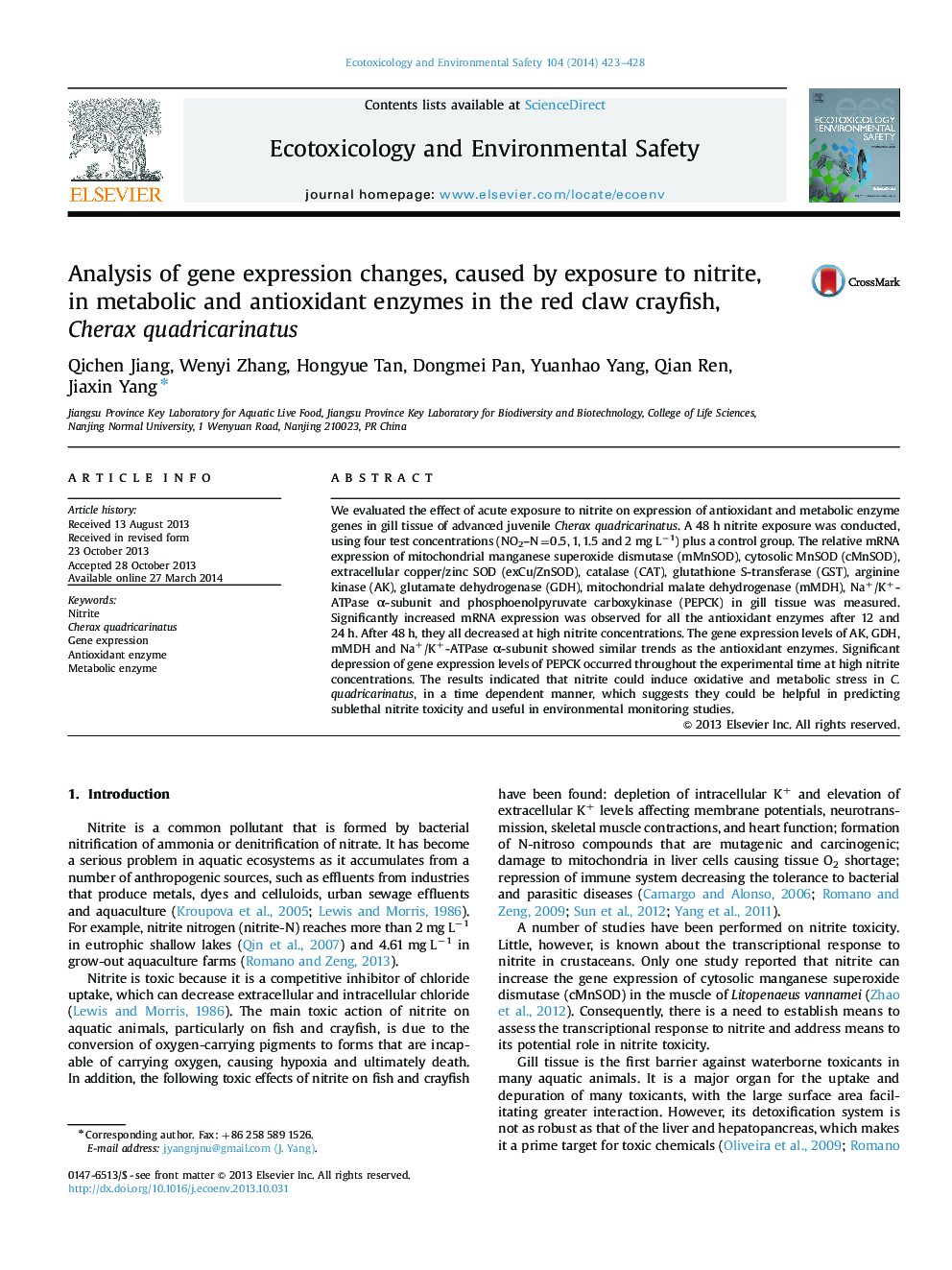| Article ID | Journal | Published Year | Pages | File Type |
|---|---|---|---|---|
| 4420150 | Ecotoxicology and Environmental Safety | 2014 | 6 Pages |
•Nitrite could induce oxidative and metabolic stress in Cherax quadricarinatus.•Gene expression of antioxidant and metabolic enzymes was modified by nitrite.•The results provide a basis for studying transcriptional response of crayfish to pollutants.
We evaluated the effect of acute exposure to nitrite on expression of antioxidant and metabolic enzyme genes in gill tissue of advanced juvenile Cherax quadricarinatus. A 48 h nitrite exposure was conducted, using four test concentrations (NO2–N=0.5, 1, 1.5 and 2 mg L−1) plus a control group. The relative mRNA expression of mitochondrial manganese superoxide dismutase (mMnSOD), cytosolic MnSOD (cMnSOD), extracellular copper/zinc SOD (exCu/ZnSOD), catalase (CAT), glutathione S-transferase (GST), arginine kinase (AK), glutamate dehydrogenase (GDH), mitochondrial malate dehydrogenase (mMDH), Na+/K+-ATPase α-subunit and phosphoenolpyruvate carboxykinase (PEPCK) in gill tissue was measured. Significantly increased mRNA expression was observed for all the antioxidant enzymes after 12 and 24 h. After 48 h, they all decreased at high nitrite concentrations. The gene expression levels of AK, GDH, mMDH and Na+/K+-ATPase α-subunit showed similar trends as the antioxidant enzymes. Significant depression of gene expression levels of PEPCK occurred throughout the experimental time at high nitrite concentrations. The results indicated that nitrite could induce oxidative and metabolic stress in C. quadricarinatus, in a time dependent manner, which suggests they could be helpful in predicting sublethal nitrite toxicity and useful in environmental monitoring studies.
